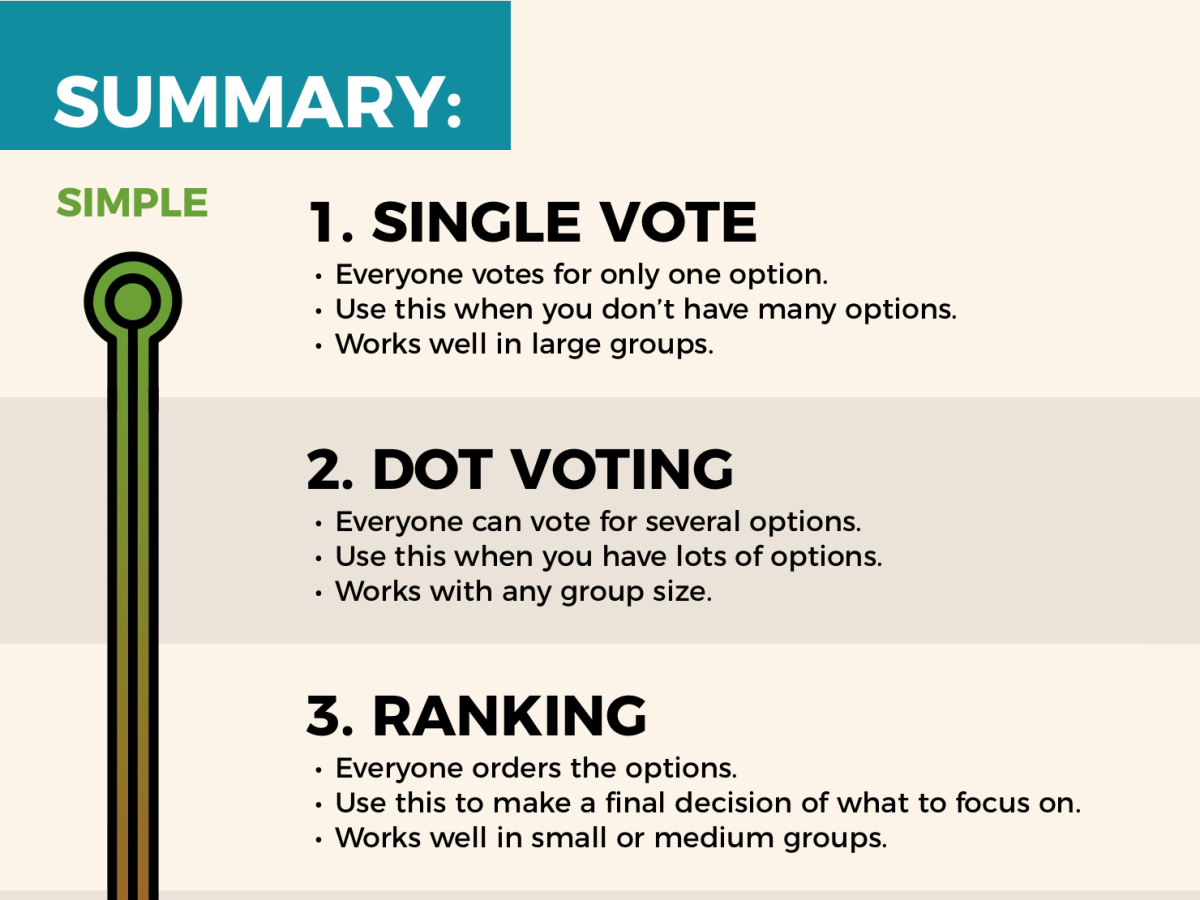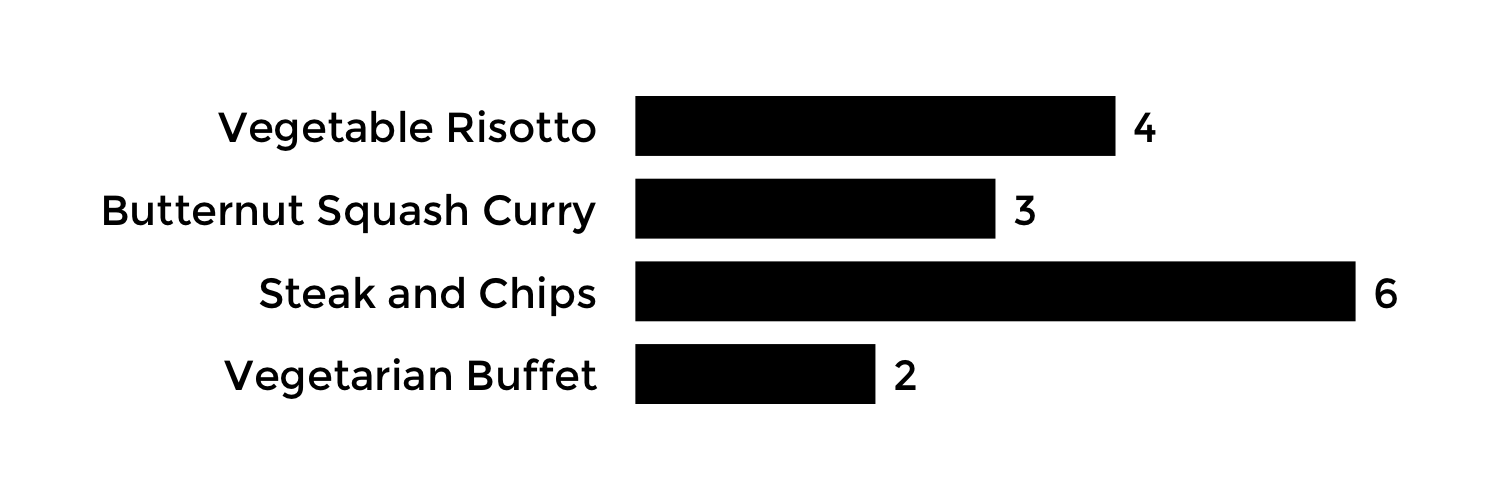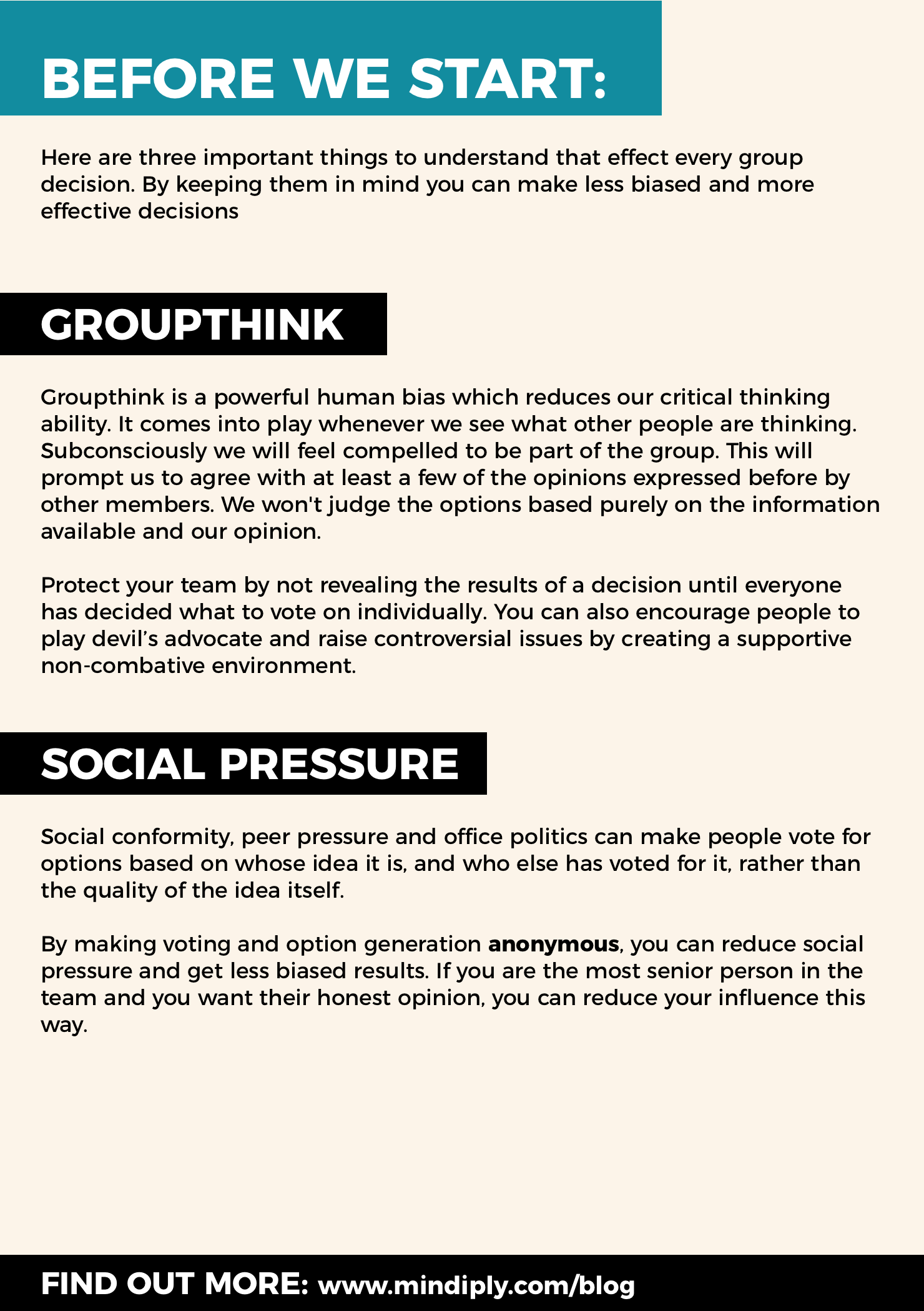
Six decision making techniques
Sarah Hutchinson21 Aug 17
Table of contents
Decision-making, prioritisation and reaching a consensus are some of the most complex and essential things in any business. Here is a practical guide to using six of the most helpful decision-making techniques widely used by facilitators.
Before we start, let's introduce three core concepts and human biases that will most likely negatively affect your decision-making process. By keeping them in mind, you can make less biased and more effective decisions.
Three things to watch out for:
1. Groupthink
Groupthink is a powerful human bias that reduces our ability to think critically. It comes into play whenever we see what other people are thinking. Subconsciously, we will feel compelled to be part of the group, prompting us to agree with at least a few of the opinions expressed by other team members - we won't judge the options based purely on the information available and our thinking.
Help your team by concealing the results of a decision until everyone has decided what to vote on individually. You can also encourage people to play devil’s advocate and raise controversial issues by creating a supportive, non-combative environment.
2. Social pressure
Social conformity, peer pressure and office politics can make people vote for options based on whose idea it is and who else has voted for it rather than the quality of the concept itself.
By anonymous voting and option generation, you can reduce social pressure and get less biased results. If you are the most senior person in the team and you want their honest opinion, that's one way to get it.
3. Vote splitting
Combine or remove similar ideas to avoid confusing results. For example, as a restaurant owner, which option should you choose to focus your marketing budget on?

Steak and chips are the most popular option, but if you go for that, you’re disappointing the nine people who voted for a vegetarian option. If there were two meat and two vegetarian dishes, would steak and chips get the same votes? Probably not, and the winner may be either a vegetarian or non-vegetarian dish, but the winner would be less likely to depend on that divide.
Six decision-making techniques
How can you apply these facts to make less biased and more effective decisions? The following six techniques can help. Each method is more sophisticated than the previous one. Our general advice is to use the most straightforward technique that gives you a good enough decision.
The sixth technique is a game technique if you have to make a decision, but you'd like to have fun while you do it.
1. SINGLE VOTE
- Everyone votes for only one option.
- Use this when you don’t have many options.
- Works well in large groups.
2. DOT VOTING
- Everyone can vote for several options.
- Use this when you have lots of options.
- Works with any group size.
3. RANKING
- Everyone orders the options.
- Use this to make a final decision of what to focus on.
- Works well in small or medium groups.
4. 2x2 MATRIX
- Everyone arranges the options according to two criteria.
- Use this when you have many options and want to know what to prioritise.
- Works well in small or medium groups.
5. DECISION MATRIX
- Evaluate each option against multiple criteria.
- Use this when you have a few competing options.
- Works well individually or in small groups.
6. SCROOP
- Play a game to make quick, fun decisions.
- Use this when you have a lot of options.
- Works well in small groups.
For decisions that don't involve groups of people, you can have a look at four techniques from the book Decisive we use and love.
Reference cards
Save or print out these to use as a quick reference.











